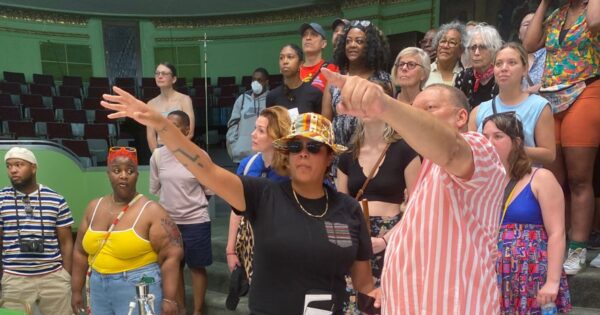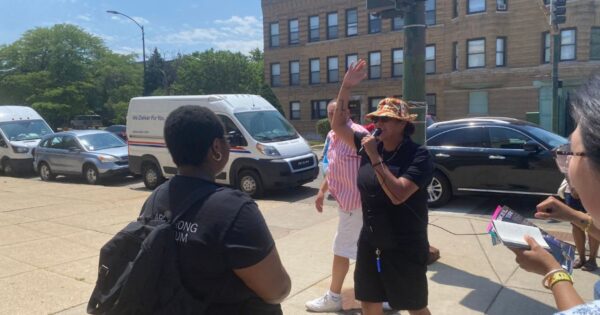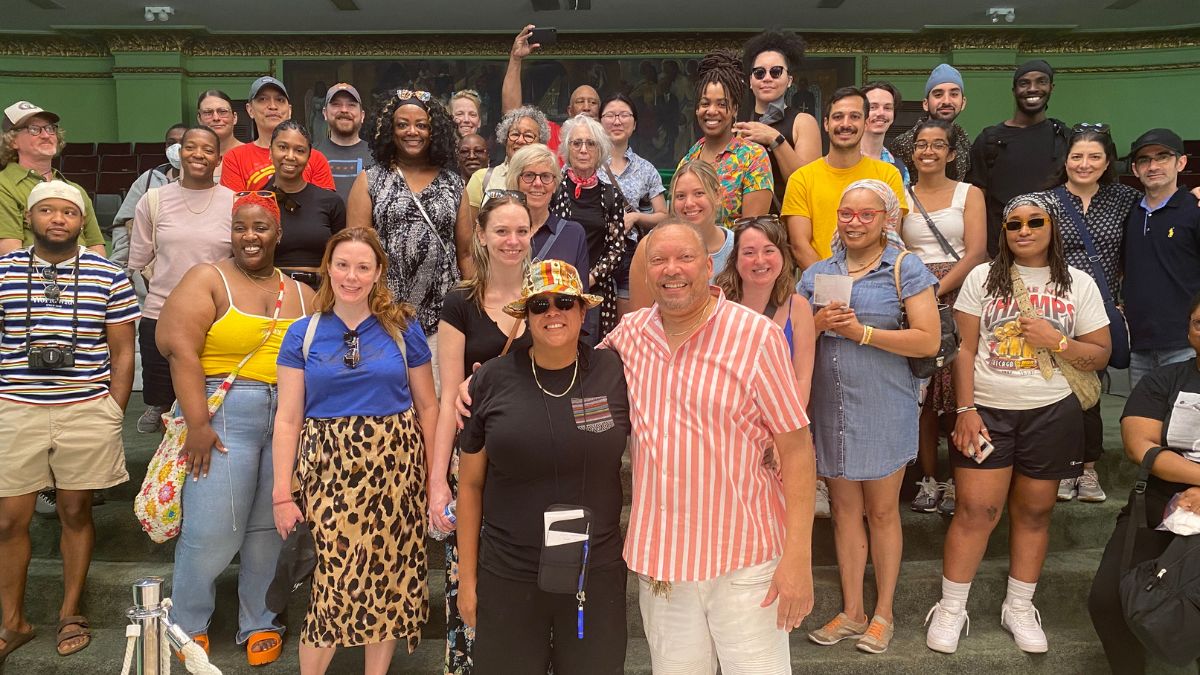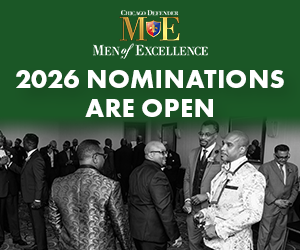This past Saturday, more than 40 people gathered at the South Side Community Art Center to take a walking tour through the heart of Bronzeville. This excursion would allow them to encounter the area’s lesser-known history.
From the 1920s on, Bronzeville, one of Chicago’s most prominent African-American communities, was home to a vibrant queer community.
The “Queer Bronzeville History Tour” illuminated this story by highlighting the spaces where Black LGBTQIA persons gathered and felt welcomed during the Great Migration. It also highlighted the architectural histories of some Bronzeville churches and their connections to the queer community.
“This is the third one,” said Rachael Pierce, who created and led the tour.
Pierce said she got the idea from a sermon series at her church but that the tour took shape after encountering a neighborhood map project that educated her on the area’s history.
“And that’s kind of where the percolation started happening as far as the tour and just getting familiar with our land,” she said. “And then I realized, ‘Oh, well, Queer Bronzeville is right here.'”
The Start of the Tour

Indeed it was right there for the participants to learn, who began their trek under a crystalline blue sky amid tolerable heat.
The tour headed south down Michigan Avenue past East Pershing Road, where a youth center, a rusted train viaduct, empty industrial spaces and residential buildings share the same street.
Along the way, Pierce gives an oral history of the community and its spaces through a microphone connected to a loudspeaker. And when she isn’t speaking, her tour companion plays 1920s jazz and blues tunes from artists like Ma Rainey and Bessie Smith on that same speaker.
As the group nears 41st Street, where a church and a funeral parlor sit across from each other, Pierce detailed the historical Bronzeville churches that were welcoming spaces for the queer community back in the day.
Unplanned Tour Stop

Then Pierce leads them west on 41st toward Wabash. As soon as they turned the corner, Pastor James R. Bryson Jr. of First Church of Deliverance, who was crossing the street, greeted them.
That greeting turned into an invitation to his church, steps away.
Founded in 1929 by Reverend Clarence H. Cobbs, the First Church of Deliverance was a place of worship considered a safe space.
As the group filed into the sanctuary and gathered near the altar, Pastor Bryson explained the church’s origins and the history of its current building, which used to be a hat factory.
“One of the great features of our church is the cross that’s on the ceiling and this consecrated white aisle that’s in the middle,” said Pastor Bryson. “And then you will notice that although we are a Protestant church, we have a Roman Catholic altar.”
And behind that is a stunning altarpiece representing the church’s relationship to God.
“And as you can tell, what is our color?” asked Pastor Bryson.
“Green,” someone said.
“Green is the color of Father Abraham,” Pastor Bryson said, “And green means prosperity and that’s what we subscribe to as a First Church of Deliverance, a spiritual church.”
The End of the Tour

As the church tour concluded and the actual walking tour resumed, Pierce led the group down Wabash and back up Michigan toward the South Side Community Art Center to complete the trip.
Pierce told the participants to reflect on the memories and lives of the neighborhood’s people, the ancestors central to the tour.
When the group arrived back at the Art Center, Pierce held a small discussion on the idea behind the tour, the pioneers of the Black Chicago gay community and why she felt compelled to do this work.
She also reflected on the just-completed tour and what it revealed to her.
“So one thing that I think was interesting that came up while we were walking was the whole discretion aspect,” she said. “Folks back in the day, let’s say, around the Great Migration and even up through like the nineties, there was a lot of stuff happening in the closet.”
But she also spoke of their courage to be themselves, a theme that undergirded the tour, from the people to those welcoming spaces.
“It wasn’t safe to come out,” Pierce said, “But folks still had the bravery to gather, to imagine, to hope.
“And that’s the importance of memories as well. It’s to keep that sea of hope and faith, to keep us moving and to keep us toward the path of wholeness.”




